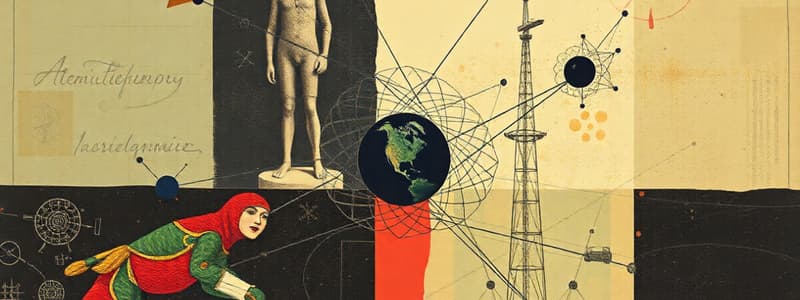Podcast
Questions and Answers
Quelle est la définition correcte du terme 'X'?
Quelle est la définition correcte du terme 'X'?
- Une théorie mathématique complexe
- Une pratique culturelle spécifique
- Une méthode d'analyse quantitative
- Un processus naturel de évolution (correct)
Quel est l'objectif principal de 'Y'?
Quel est l'objectif principal de 'Y'?
- Élargir le marché
- Augmenter la production
- Réduire les coûts
- Améliorer la qualité (correct)
Quelle affirmation à propos de 'Z' est fausse?
Quelle affirmation à propos de 'Z' est fausse?
- Elle peut être mesurée quantitativement
- Elle est toujours bénéfique (correct)
- Elle implique un changement de comportement
- Elle nécessite une analyse préalable
Quel avantage est souvent associé à 'A'?
Quel avantage est souvent associé à 'A'?
Quel est un inconvénient potentiel de 'B'?
Quel est un inconvénient potentiel de 'B'?
Flashcards
Chaîne de caractères
Chaîne de caractères
Une séquence ordonnée de caractères, généralement utilisés pour représenter du texte.
Entier
Entier
Un type de données qui représente un nombre entier, positif ou négatif.
Nombre à virgule flottante
Nombre à virgule flottante
Un type de données qui représente un nombre avec une partie décimale.
Booléen
Booléen
Signup and view all the flashcards
Variable
Variable
Signup and view all the flashcards
Study Notes
Atomic Theory
- Democritus proposed the concept of "atomos" (indivisible particles) as the fundamental building blocks of matter.
- John Dalton's atomic theory provided scientific evidence for atoms as solid, indivisible spheres that combine in fixed ratios to form compounds.
- J.J. Thomson's plum pudding model suggested atoms are composed of negatively charged particles (electrons) embedded within a positively charged "soup."
- De Broglie proposed the wave-particle duality of matter, suggesting that electrons exhibit both wave-like and particle-like properties.
- Erwin Schrödinger's quantum mechanical model described electrons as waves and predicted their behavior using the Schrödinger equation.
- Electrons occupy orbitals, regions of space where they are most likely to be found rather than fixed paths.
- Werner Heisenberg's uncertainty principle states that it is impossible to precisely know both the position and momentum of a particle simultaneously.
- Max Born's probabilistic interpretation explains the likelihood of finding an electron in a certain region of space using probability density.
Key Definitions
- Atom: The smallest unit of matter indivisible by ordinary chemical means.
- Law of Conservation of Mass: The total mass of atoms in a chemical reaction remains constant.
- Subatomic Particles: Atoms contain three key subatomic components:
- Electron: Negatively charged particle.
- Proton: Positively charged particle.
- Neutron: Neutral particle.
- Isotopes: Atoms of the same element with the same number of protons, but different numbers of neutrons.
- Average Atomic Mass: The weighted average mass of all isotopes of an element, calculated based on their relative abundance.
Studying That Suits You
Use AI to generate personalized quizzes and flashcards to suit your learning preferences.




